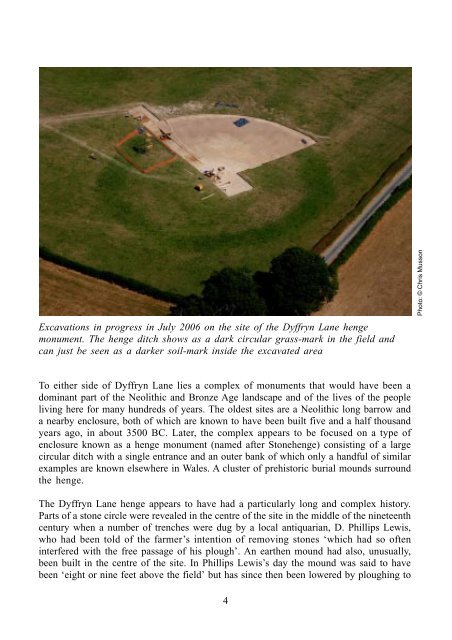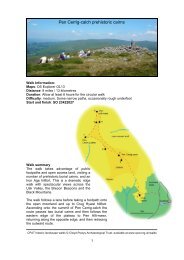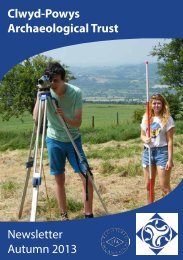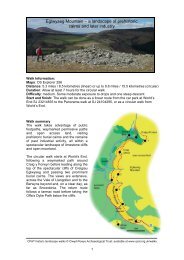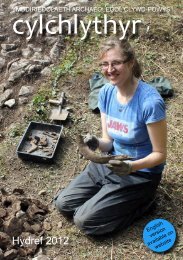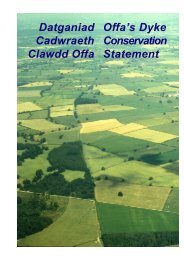Spring 2007 issue - Clwyd-Powys Archaeological Trust
Spring 2007 issue - Clwyd-Powys Archaeological Trust
Spring 2007 issue - Clwyd-Powys Archaeological Trust
- No tags were found...
You also want an ePaper? Increase the reach of your titles
YUMPU automatically turns print PDFs into web optimized ePapers that Google loves.
Excavations in progress in July 2006 on the site of the Dyffryn Lane hengemonument. The henge ditch shows as a dark circular grass-mark in the field andcan just be seen as a darker soil-mark inside the excavated areaPhoto: © Chris MussonTo either side of Dyffryn Lane lies a complex of monuments that would have been adominant part of the Neolithic and Bronze Age landscape and of the lives of the peopleliving here for many hundreds of years. The oldest sites are a Neolithic long barrow anda nearby enclosure, both of which are known to have been built five and a half thousandyears ago, in about 3500 BC. Later, the complex appears to be focused on a type ofenclosure known as a henge monument (named after Stonehenge) consisting of a largecircular ditch with a single entrance and an outer bank of which only a handful of similarexamples are known elsewhere in Wales. A cluster of prehistoric burial mounds surroundthe henge.The Dyffryn Lane henge appears to have had a particularly long and complex history.Parts of a stone circle were revealed in the centre of the site in the middle of the nineteenthcentury when a number of trenches were dug by a local antiquarian, D. Phillips Lewis,who had been told of the farmer’s intention of removing stones ‘which had so ofteninterfered with the free passage of his plough’. An earthen mound had also, unusually,been built in the centre of the site. In Phillips Lewis’s day the mound was said to havebeen ‘eight or nine feet above the field’ but has since then been lowered by ploughing to4


